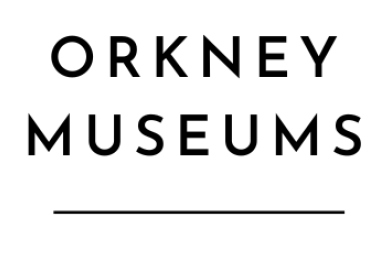A Cruisie Mould

The courtyard of Tankerness House, which houses the Orkney Museum, has a number of interesting artefacts displayed around the walls. Among the knocking stones and querns there is a piece of red sandstone with strange carvings cut into it. You can be forgiven for not knowing what it is, as they are no longer common and not used any more. But what is it? The answer to that is that it is a mould for making a cruise lamp. What is that? Read on…



Cruisie lamps were used in homes in Orkney from the 1600 to the 1800s. They are simply oil lamps, made by hammering thin sheets of iron into a mould cut into a stone, then the metal was trimmed and filed smooth.

As you can see in the photograph above, the cruisie lamp is made with two pans, one slightly larger than the other. The larger pan (left in the photo) is the lower one while the smaller one was suspended above it. Oil from the lamp may drip from the wick of the upper pan, but the lower pan would catch it. Oil was too precious to lose, so the lower pan prevented waste.

The upper pan was hung on a ratchet (see photograph above) which could alter the angle of the pan, to keep the oil flowing slowly forwards. The metal fixing at the top could be used as a hook or driven into a stone wall. The oil used was mostly derived from fish livers, which were boiled and the oil skimmed off the top of the water. Dogfish were popular for this purpose as their livers provided a quantity of oil and they made good eating as well. The blubber of seals and whales was also used, if available.


The wick used was made from the pith found inside rushes (known as ‘rashes’ in Orkney). If you inserted a thin nail through the rush and held the top of it fast between your teeth, then with one quick movement you pull the nail forward, the soft inside of the rush would pop out. It is a long white spongy material which looks like it was man-made. Once dried it would soak up the oil and burn for quite some time.


In this photograph of Kirbuster Museum, Birsay, you can see, on the right, an ‘L’ shaped wooden frame fixed to the wall with a cruisie lamp hanging from it. This could swing out from the wall, into the room, so that the light from the lamp could be brought nearer to where a person was working in the evenings. Dr Raymond Parks.

It has been argued that the shape of a cruise lamp was probably influenced by that of a shell, probably a whelk shell. Here we see one that has been used for that purpose. It was photographed by Tom Kent in the early 20th century. Note the wick is a piece of string. Orkney Library & Archive.




The Orkney Museum has lost an important part of its income from donations and shop sales during the pandemic. If you would like to support the museums (or one in particular) then you can donate to us online by clicking on the link. Every penny is appreciated. Thank you.
